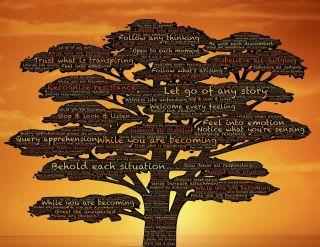Self-Help
5 Steps to Not Be a Victim of Your Upbringing or Culture
You can choose who you want to be and the life you want to lead.
Posted January 8, 2024 Reviewed by Monica Vilhauer
Key points
- We are all victims of our upbringing and culture.
- Both exert almost total control over who we become when we are young.
- But we don't have to remain victims of our upbringing and culture for our entire lives.

Let’s begin with a basic reality of life: We are all victims of our upbringing and the culture in which we grow up. We didn’t get to choose our parents, siblings, extended families, where we lived, where we went to school, the activities we participated in, or the conditions of our early lives. Rather, our upbringings were the universe that enveloped us from birth. Every value, attitude, belief, emotion, behavior, and ways of interacting that was a part of our upbringings was absorbed into our psyches.
In turn, you can think of culture as the attitudes and norms of a particular social group. When we usually think about culture, we tend to think in a larger context that includes our popular and media cultures, and the large institutions that shape our lives—for example, those of religion, politics, and education—by which we are surrounded early in our lives. These bigger forces certainly have a significant impact on who we become because, as social beings with a strong need to feel a part of a group, we naturally accept the cultural messages that we hear most frequently.
At the same time, there are other more “micro” cultures that also influence the way we view ourselves and our world, including our family culture and the cultures of our daily lives, including sports, arts, hobbies, internet-related activities (e.g., texting, social media, online games), as well as friendships, peers, and adult groups with whom we are regularly in contact. All of these smaller cultural forces shape us in subtle, yet indelible, ways.
Hopefully, most of those influences from our upbringing and culture were positive, thus contributing to our healthy personal development. Unfortunately, an unfortunate reality of life is that neither our upbringing nor the culture within which we were raised are entirely free of toxins. Particularly with the ubiquity of the internet, unhealthy messages about wealth, success, celebrity, power, status, consumption, and beauty are ever present in the lives of most of us, especially those who are young.
As a result of these “contaminants” that are now commonplace in our lives, we may adopt values, attitudes, beliefs, behaviors, and ways of interacting with others that are unhealthy and interfere with our happiness, relationships, and the pursuit of our goals. These obstacles can lead to a wide range of personal challenges. These difficulties can include low self-esteem, perfectionism, fear of failure, and self-criticism that don’t severely interfere with functioning (though they can detract from happiness, productivity, and relationships). Or they can include serious mental-health issues, such as depression, anxiety, and substance abuse, that can significantly impair our well-being, functioning, and relationships.
How we turn out, given the plethora of forces beyond our control that nonetheless shape us, seems like quite a roll of the dice. But being a victim early in our lives doesn’t mean that we have to be a victim all our lives. At some point, as early as in our teens, but more likely in our 20s (though it’s never too late), we have the opportunity to reject our victimhood and decide for ourselves who we want to be and how we want to think, feel, behave, and interact with others.
Step #1: Make a Commitment to Deliberate Choices
Because the way you think, feel, behave, and interact so far in your life have been deeply ingrained from years of your upbringing and culture, your natural reaction to current life situations will be driven by those early forces. To resist these involuntary influences, you must engage in what I call the “3 Cs” (consistent conscious commitment) which involves making a deliberate choice about the direction you take your life when presented with “forks in the road.” One fork would be the road you’ve been on driven by who you were from your early life dictated by your upbringing and culture. Another fork would be the road you want to be on driven by who you are now, who you want to be in the future, and then choosing the “good” road over the “bad” road.
Step #2: Understand the Forces in Your Upbringing and Culture
The next step in discarding your victimhood involves dissecting the upbringing and culture in which you were immersed when you were young. This process involves:
- Scrutinizing all of the forces that shaped your life.
- Identifying the most influential forces in your early years.
- Recognizing and appreciating the aspects of your upbringing and culture that had a healthy impact on who you have become.
- Acknowledging the aspects of your upbringing and culture that had an unhealthy impact on who you have become (this may be a difficult step because some of these unhealthy influences may be people or institutions toward whom you feel a deep connection and affection).
- Seeing the emotions that have dominated your life, the general direction of those emotions (negative or positive), and the specific emotions that shape your daily existence.
- Identifying the people who were most influential in your early life, whether to your benefit or detriment.
Step #3: Challenge Your Past
As I noted above, when you were young, you accepted many values, attitudes, beliefs, and ways of behaving and interacting blindly. In a way, you acceded without making a deliberate choice about whether they were right for you. In Step #3, you challenge what had been your conventional wisdom in your life about who you are and how the world worked.
In doing so, you examine how your upbringing and culture growing up influenced you. Were the messages that you absorbed from them and became instilled in you as values, attitudes, emotions, etc. healthy or otherwise? The third step is important because it brings to your conscious awareness, perhaps for the first time in your life, many aspects of who you have become that had previously existed only in the shadowy corners of your unconscious. In this light, those unfamiliar, yet impactful, parts of you become tangible and understandable, and less scary.
Step #4: Identify Your Present and Future
The first three steps in this journey into the deepest recesses of your psyche give you the knowledge and understanding of who you are and how you became who you are. These revelations alone can have a profound effect on how you perceive yourself and your ability to give yourself acceptance, empathy, and forgiveness, all ways that prepare you to let go of your past and embrace the present and future you really want.
At the same time, you can’t put the past behind you until you have some clarity on what future you want in front of you. As a result, you must now consider the person you want to be and the life you want to lead. Essential questions to ask include:
- What kind of person do I want to be?
- What values, attitudes, and beliefs do you want to consciously embrace?
- How do you want to behave and interact with others moving forward?
- What emotions do you want to dominate your life?
- What educational and career paths do you want to follow?
- What sorts of people do you want to have in your life?
Step #5: Pursue the New You
The first four steps in your journey toward positive life change set the stage for Step #5. This final step is where, as the saying goes, “the rubber meets the road.” In other words, as with any journey, you must move forward to get where you want to go.
The challenge is that all the forces of your upbringing and culture growing up have a powerful inertia to them. They are deeply entrenched in your psyche and well-practiced at leveraging all those values, attitudes, beliefs, emotions, behaviors, and ways of interacting that led you to this point. As such, they will be reluctant to relinquish control over you.
Thankfully, you now have a formidable arsenal with which to repel those long-standing forces, First, you have the knowledge, insights, and understanding about who you are and, most importantly, why you are who you are. This deep awareness of “what makes you tick” helps you reduce the power of the old and unconscious forces to a resistible level. Second, you possess a pre-frontal cortex, which gives you the capacity to weigh risk and rewards, consider immediate and long-term consequences, and, ultimately, make deliberate choices about how you want to think, the emotions you want to experience, the way you choose to behave, and the manner in which you want to interact with others.
From this point, you can then return to Step #1 and make deliberate choices on a moment-to-moment basis about who you want to be, how you want to act on and react to the world around you. Admittedly, Step #5 is the most difficult because, as I noted above, your “old you” will want to cling to the familiarity of who you were. But every time you take the “good road,” it gets easier the next time because positive change is self-reinforcing; you feel good and good things usually happen.
With each step forward, you break your old inertia, create a new positive momentum, and steadily redirect yourself and your life in a healthier direction of your own choosing. Until one day, you notice that you didn’t have to choose to take the good road—you just did. At that point, you will know that you have jettisoned the old and unhealthy aspects of who you were from your upbringing and culture and embraced the new and healthy aspects of who you have chosen to be.




